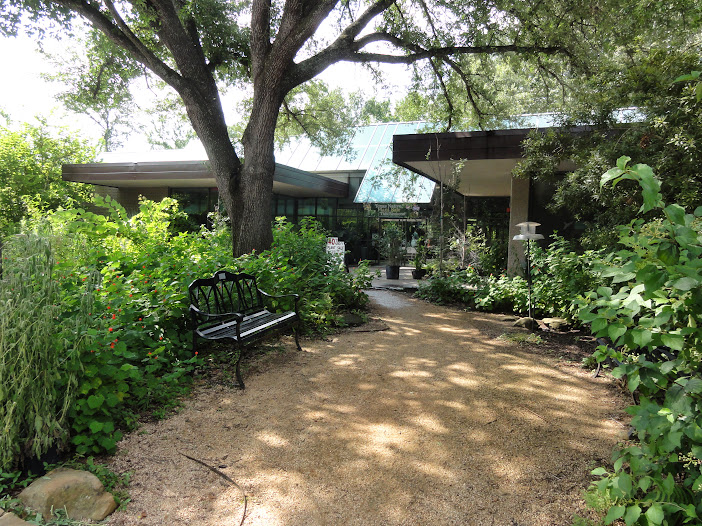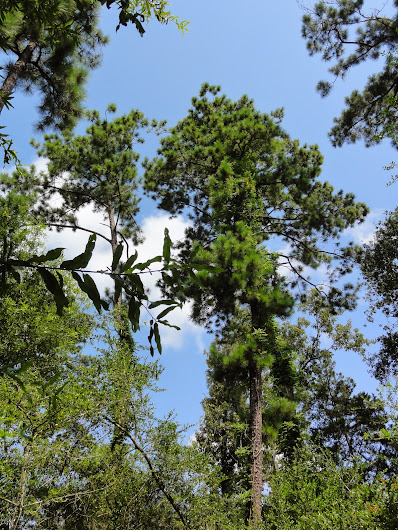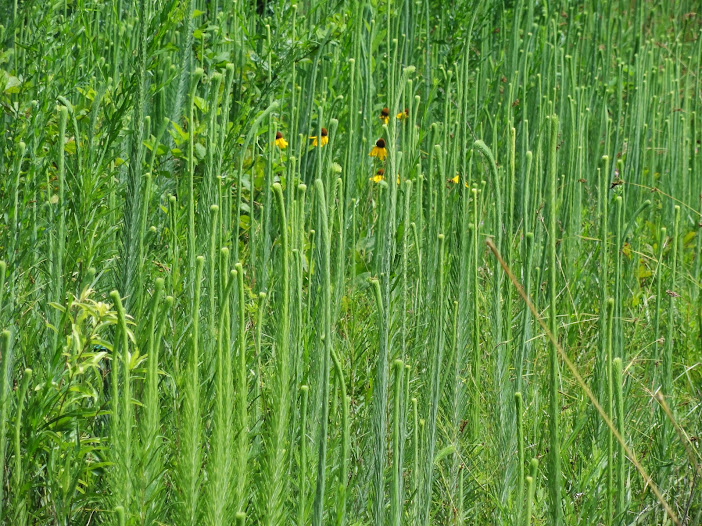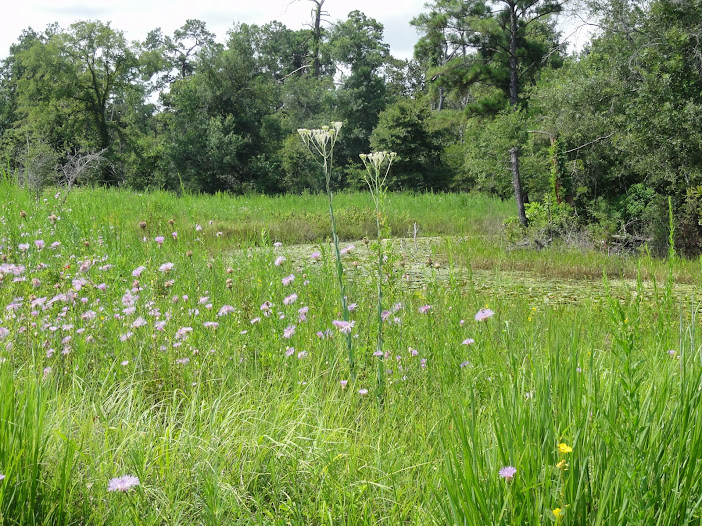 |
| Houston Arboretum and Nature Center |
We were visiting the
Houston Arboretum and Nature Center. Behind a man at the front of the line of two - who wouldn't stop yammering to the desk attendant about Gov. Perry's policies, disparaging the South, how she could live a happier life if only she would move to the suburbs of Washington, DC and get a federal government job, thanking her for their - mostly his - conversation - I cleared my throat, stepped up to the desk, paid $3 dollars for a
trail map, and asked the lady with the few words I could fit in edge-wise. "Ma’am, if we only have an hour or so to explore, what would you recommend?" She seemed relieved that I’d asked.
She also gave me a free handout, “A Brief History of the Houston Arboretum and Nature Center." It's well worth getting a copy.
Contact the arboretum.
The attendant said "This is a true nature center." Were truer words ever spoken? She instructed that from the Nature Center, we should follow the Inner Loop clockwise to the North Meadow Trail, follow it to the Outer Loop, go north past the Willow Oak Pond, and turn west on the Willow Oak Trail to return to the Nature Center. Her recommendation was spot-on.
The climate of Houston, TX is very much like south Georgia, my home – sweltering and oppressive in summer. The heat and humidity motivated us to cut our visit short and get out of there as soon as possible. But walking fast generated more sweat. So we moseyed, more or less, as we generally do down South.

Houston Arboretum’s flora is also familiar. Most are native species. Except for some brush clearing, they grow in wild abandon. Perhaps this is what the attendant implied by “a true nature center.” I could say the same about a walk through the woods behind my house.
The Houston Arboretum boasts a few improvements which my woods can’t: a nature center with classrooms and displays,
well-marked trails, broad paths,
comfortable benches, easy access, and
boardwalks over seasonally wet areas. It’s also encompasses more acreage.
Along the way from the Outer Loop to the Willow Oak Pond, I spied what appeared from a distance to be a flowering
Crinum americanum, also known American crinum lily, Seven sisters, Swamp lily, Southern swamp lily, String lily. I wanted to get a closer look, but didn’t. It appeared one or two persons had ventured out to do so. I could see their trail, but I wasn’t going. The weeds were high and I was wearing shorts.
Other noted species along the way included
Partridge pea (Chamaecrista fasciculata),
American basket-flower (Centaurea americana), Trumpet creeper (
Campsis radicans),
Whitemouth dayflower (Commelina erecta),
Turk's cap (Malvaviscus arboreus),
Pink Texas sage and
Red Texas sage (Salvia greggii),
Rattlesnake master (Eryngium yuccafolium), and Blue passionflower (
Passiflora caerulea).
 |
| Meadow, Houston Arboretum |
We did not explore all the trails in the Houston Arboretum, but were pleased with the beautiful meadow and
Meadow Pond along the trail. They were certainly the highlights of our morning walk.
 |
| Meadow Pond with Centaurea americana and Eryngium yuccafolium |
The Houston Arboretum and Nature Center presents many seasonal events for adults and children. Children's classes were being held in the visitor center the day we visited. They seemed well-attended. Houston residents should check them out. It's also a great place for walks, nature photography and bird watching.
There is no admission charge, but donations are encouraged. The Houston Arboretum is located at 4501 Woodway Drive.





